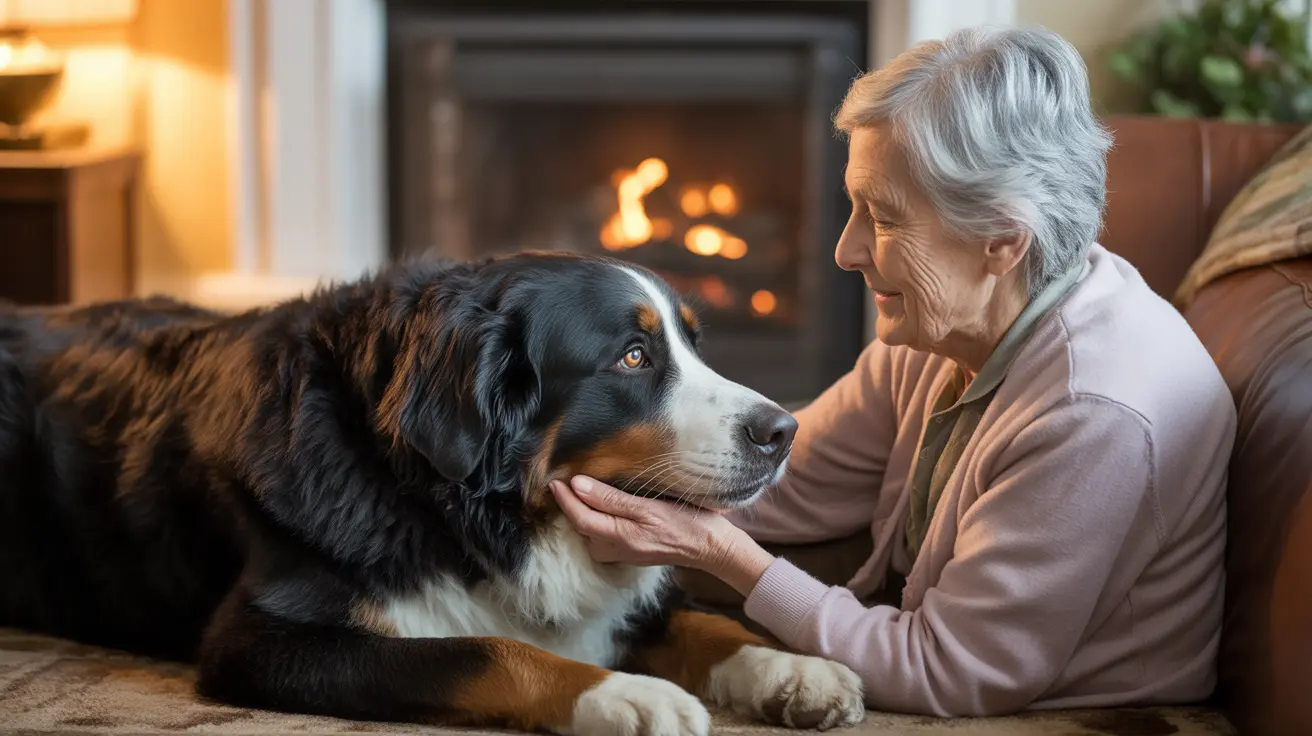When a dog is approaching the end of life, other dogs in the household often display remarkable awareness and behavioral changes. Through their incredible sense of smell and emotional intelligence, dogs can detect subtle changes in their dying companion, leading to various responses that reflect their understanding and emotional connection.
In this comprehensive guide, we'll explore how dogs react when sensing another dog's impending death, what signs to watch for, and how you can support both your dying pet and their canine companions during this difficult time.
Physical and Behavioral Signs Dogs Show
Dogs exhibit several distinctive behaviors when they sense another dog is dying:
Increased Attention and Protective Behavior
- Refuse to leave the sick dog's side
- Lay close to or gently cuddle with them
- Guard the area where the dying dog rests
- Show increased alertness to their companion's needs
Changes in Daily Routine
- Reduced interest in play or exercise
- Changes in eating patterns
- Disrupted sleep schedules
- Unusual restlessness or pacing
The Science Behind Dogs' Awareness
Dogs possess an extraordinary ability to detect physical changes in other animals through their acute senses:
Olfactory Detection
With approximately 300 million olfactory receptors, dogs can smell biochemical changes that occur during the dying process, including:
- Volatile organic compounds (VOCs) released by dying cells
- Hormonal changes
- Chemical markers of organ dysfunction
Emotional Recognition
Beyond physical detection, dogs demonstrate remarkable emotional awareness:
- They can sense changes in other dogs' energy levels
- They respond to alterations in body language and behavior
- They pick up on stress hormones and emotional signals
Supporting Your Dogs During End-of-Life Care
As a pet owner, there are several ways to help both your dying dog and their canine companions:
Creating a Comfortable Environment
- Provide quiet, comfortable spaces for both dogs
- Maintain familiar routines when possible
- Allow supervised interaction between the dogs
- Ensure easy access to necessities for both animals
Emotional Support
- Give extra attention to both dogs
- Speak in calm, reassuring tones
- Provide comfort items like favorite beds or toys
- Allow natural interactions between the dogs
After Death: Managing Grief in Surviving Dogs
When a dog passes away, surviving dogs may experience a period of grief, showing:
- Decreased appetite
- Lethargy or depression
- Increased vocalization
- Searching behaviors
- Changes in sleep patterns
Frequently Asked Questions
How do dogs typically behave when they sense another dog is dying or very ill?
Dogs often become more attentive and protective of their dying companion. They may lay close by, show reduced interest in normal activities, and display signs of anxiety or stress. Some dogs might also become more clingy to their owners or withdraw from regular social interactions.
What signs indicate that a dog is grieving the loss of a canine companion?
Grieving dogs commonly show decreased appetite, lethargy, disrupted sleep patterns, and may search for their lost companion. Some dogs vocalize more than usual or display anxiety-related behaviors like excessive licking or pacing.
Can dogs detect when another dog is near death through changes in smell or behavior?
Yes, dogs can detect impending death through their acute sense of smell, which allows them to notice biochemical changes in dying cells and body chemistry. They also recognize changes in behavior, energy levels, and body language of their dying companion.
How can I support my dog emotionally when their canine friend is dying or has passed away?
Maintain regular routines, provide extra attention and comfort, and allow them to process grief naturally. Ensure they have quiet spaces to retreat to, and consider consulting a veterinarian if grief symptoms become severe or prolonged.
Why do some dogs become clingy or withdrawn when a fellow dog in the household is dying?
Dogs may become clingy or withdrawn due to their emotional connection to the dying dog and their ability to sense changes in the household dynamic. These behaviors can be stress responses to the situation and their way of seeking comfort or processing the changes.
Remember that each dog's response to a dying companion is unique, influenced by their personality, relationship with the dying dog, and previous experiences with loss. By understanding these behaviors and providing appropriate support, you can help your dogs navigate this challenging time with compassion and care.






